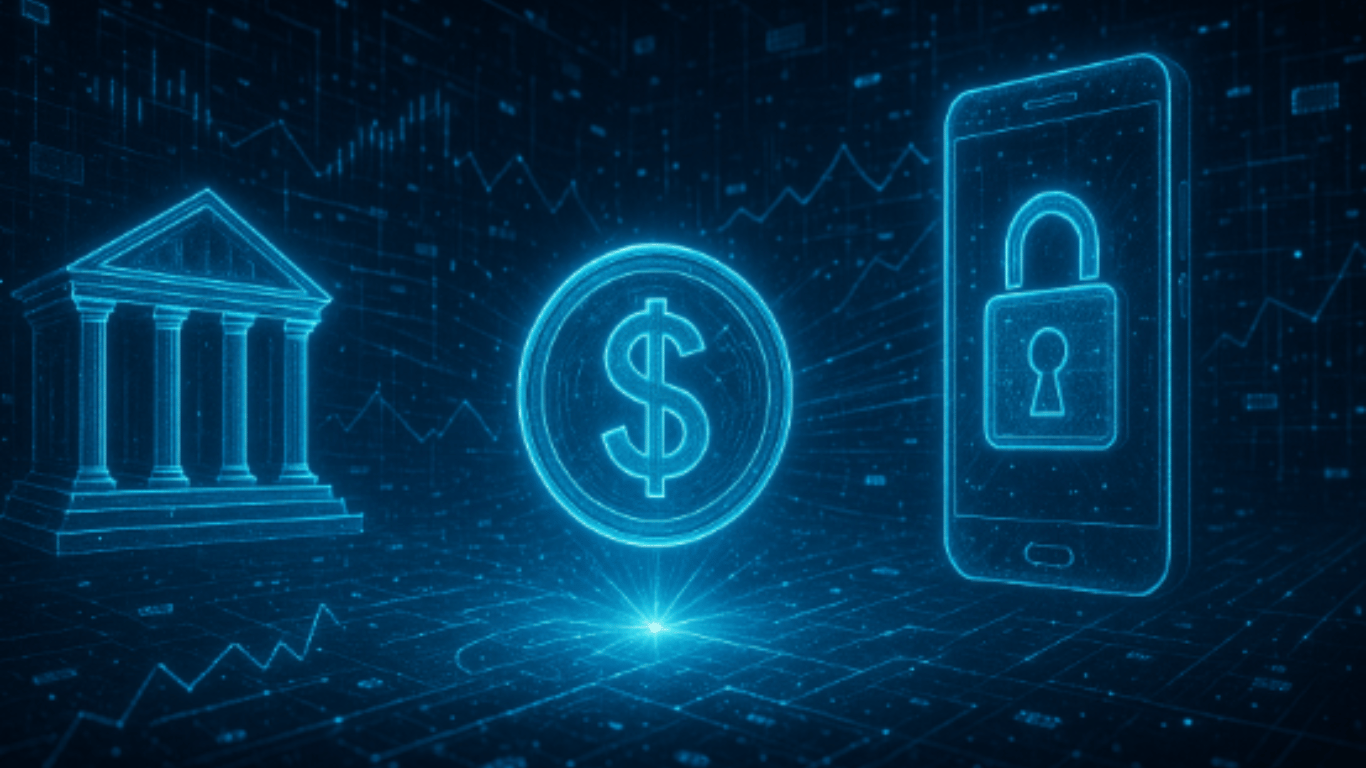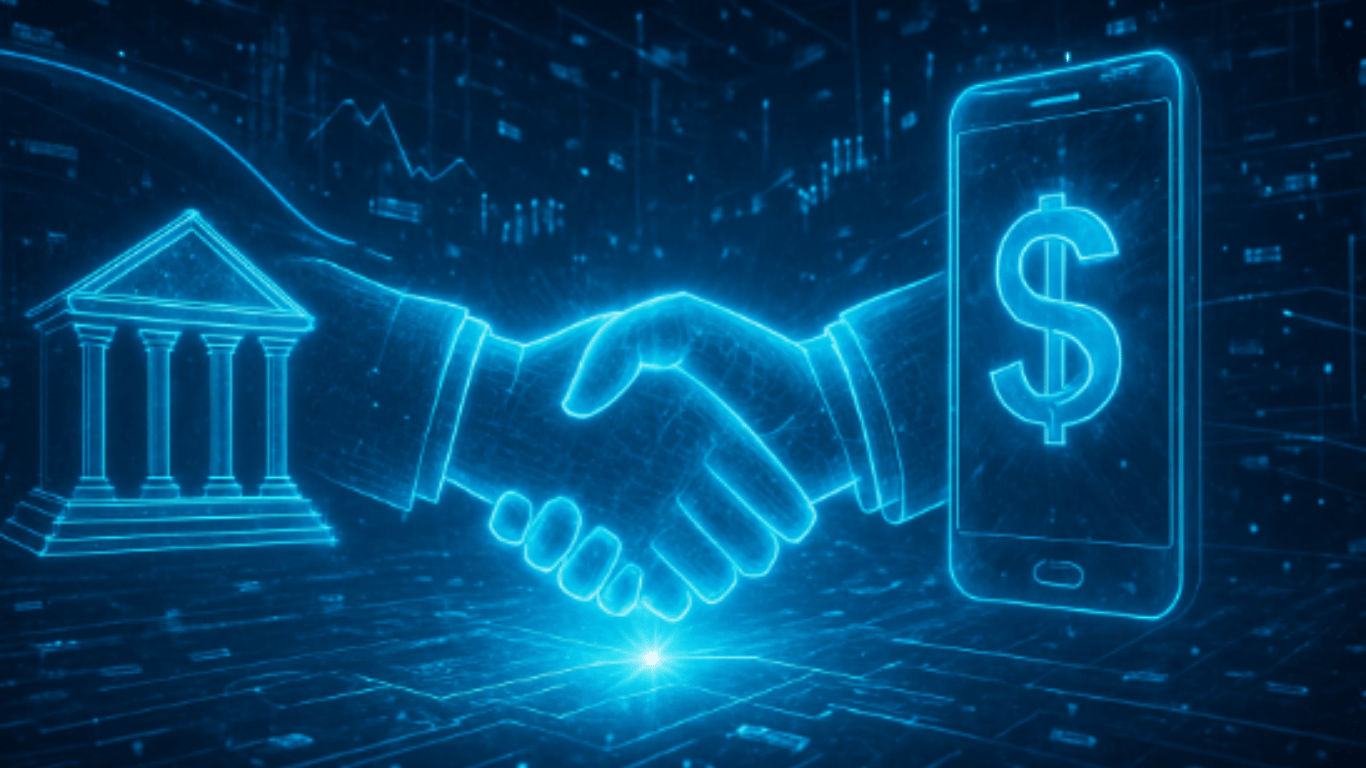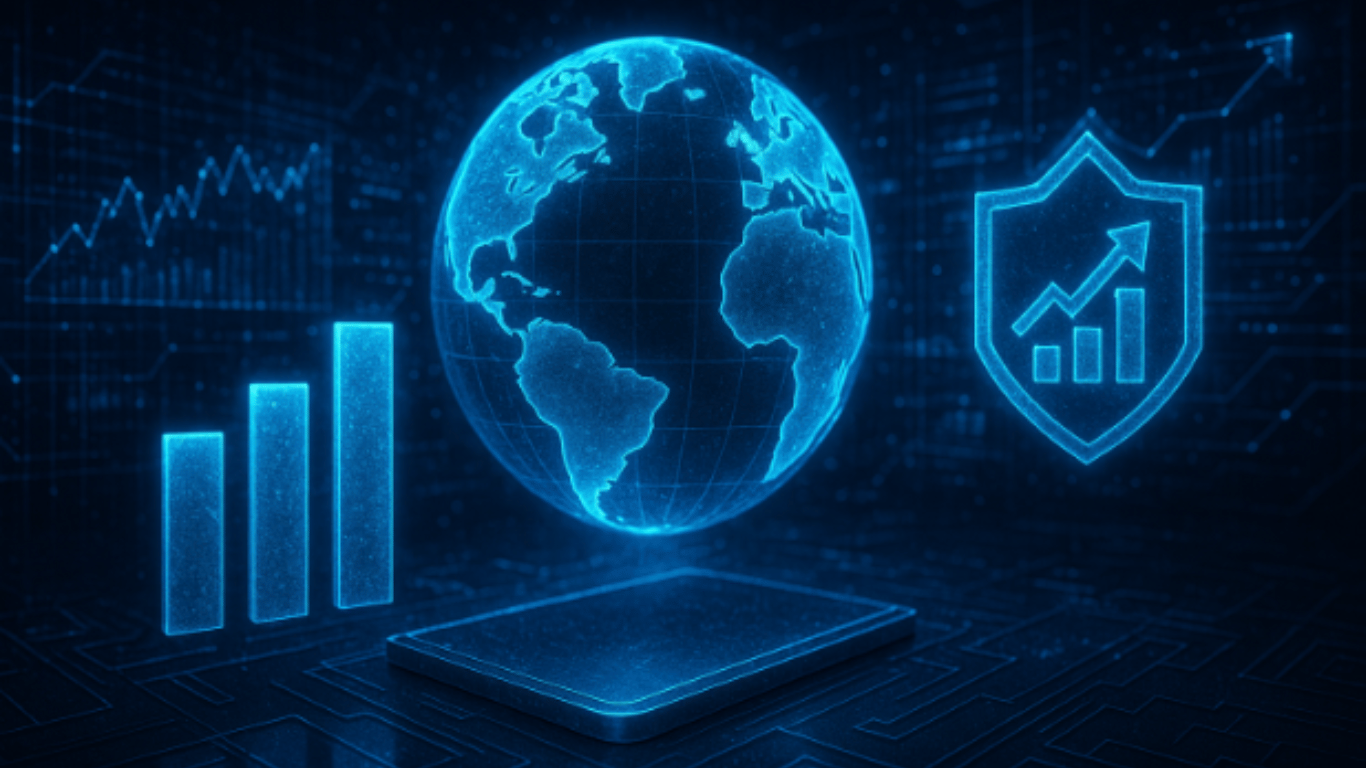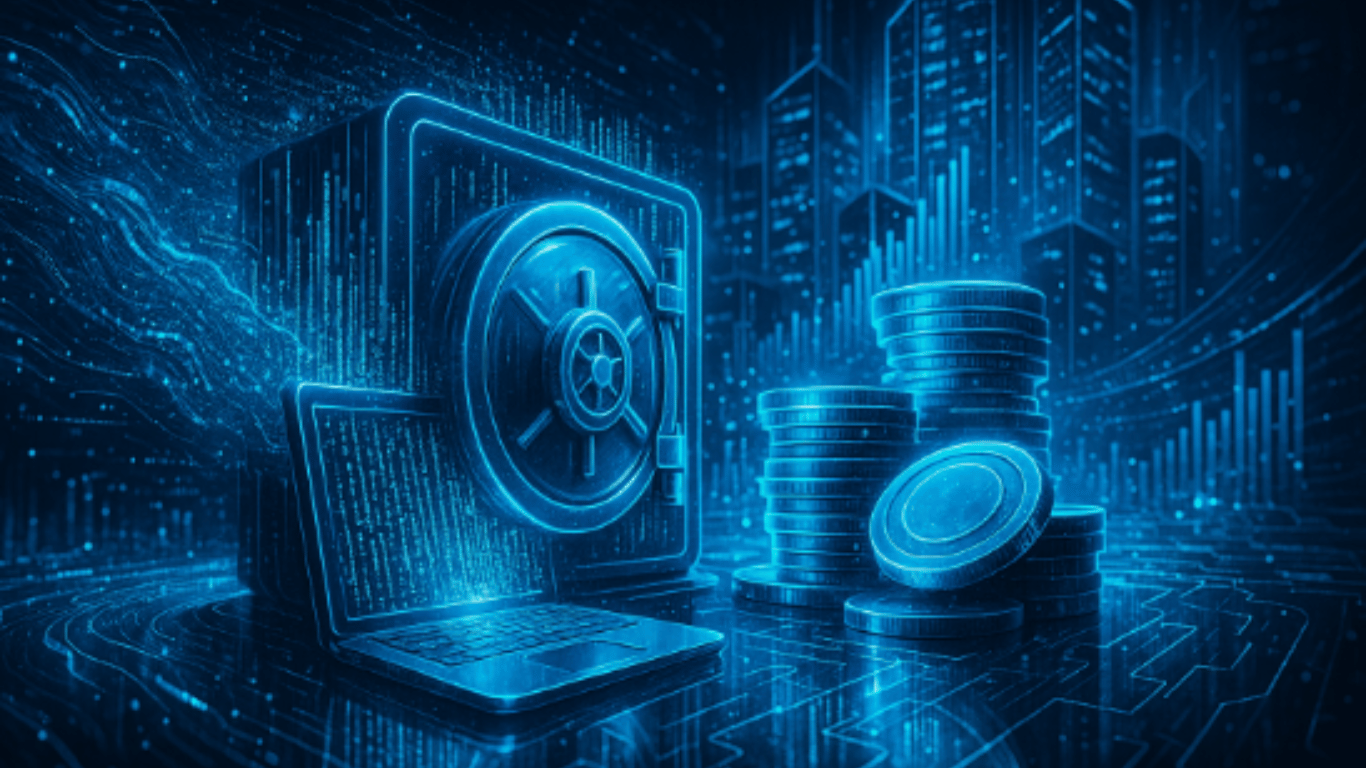Giving a comprehensive and exhaustive definition of FinTech – or fintech – it’s a hard task.
This word encompasses so many sectors and markets, but always implies some principles – namely a user-focused experience and financial inclusion.
The definition of fintech will maybe change over time, but we at FinTech Weekly crafted a complete definition that will help you discover the meaning of fintech, the history of this industry, its environment – and drawbacks – and its applications – related to both businesses and people.
Table of Contents
- What is FinTech? A definition
- #1 Function of financial technology – FinTech improves the traditional financial industry
- #2 Function of financial technology – FinTech finds new solutions to meet people’s needs
- History of fintech
- FinTech 1.0
- FinTech 2.0
- FinTech 3.0
- FinTech 3.5
- The fintech environment
- #1 Fintech area: Finance
- #2 Fintech area: Payments & Infrastructure
- #3 Fintech area: Data
- Fintech applications in everyday life
- Fintech for people
- Fintech for businesses
- Where is fintech headed?
- FAQs
What is FinTech - A Definition
FinTech stands for financial technology, which consists in the use of innovative technologies applied to the financial industry.
It’s not easy to define fintech in a few words, because it spans across different sectors and has more than one functionality.
In general, the perception people have of fintech has to do with the disruptive innovations it brought if compared to the traditional financial system we are used to.
But in many cases, fintech is something that improves the traditional financial system, without totally breaking with it, but only giving people a more consumer-oriented and inclusive experience.
So, we could continue our definition of fintech by saying that it has mainly two purposes:
- FinTech aims to improve the traditional financial industry,
- FinTech wants to find new solutions, in line with the new challenges people need to face in the modern economy.
It seems like a broad explanation of financial technology, but it’s a good starting point to give you an exhaustive definition of FinTech and to give you a hint about all its different use cases.
#1 Function of financial technology: FinTech improves the traditional financial industry
Fintech is broader than you might imagine, that’s why we at FinTech Weekly want to divide its goals into two macro categories.
Improving the traditional financial industry is the first one.
But why should fintech improve the traditional financial system? Is it so bad?
Let’s say that there is no definite answer and your answer might be influenced by many factors: your income, how many times you make global transactions, if you prefer cards instead of cash, what are your convictions and opinions related to inclusivity, how complex the management of your finances is, if you run a business or not.
As you can see, many factors can influence the way you perceive the traditional financial system, and as a consequence, they can influence the answer if you need to explain how – and why – fintech improves finance.
Of course, we will be as objective as possible.
So, to get back to our previous question – is the traditional financial system so bad? – our reply is yes… and no.
The traditional financial system is what helped us to manage corporate and personal finances so far. And when fintech came into the scene, it didn’t need to reinvent the wheel – as we will see later.
#2 Function of financial technology – Fintech finds new solutions to meet people’s needs
So far, we said that the meaning of fintech lies in how it deals with the financial system – in a disruptive way, even if sometimes it just needed to improve some aspects of traditional finance.
So, what’s the difference between traditional finance and fintech? At the end of the day, financial technology appeared many years ago and, especially at the beginning, it was naturally integrated into traditional finance.
The difference between traditional finance and fintech lies in the level of flexibility and speed.
Traditional finance is based on:
- Full trust,
- Strong regulatory framework,
- Strict requirements for what concerns the financial conditions of people,
- Fully centralized control.
FinTech is mainly based on technology. A less restrictive regulatory framework helps with inclusion – but this also has drawbacks, and we saw this also in the case of fintech companies and the PPP.
In fact, regulation and financial technology sometimes are not in line, and this often affects the relationship between fintechs and banks.
Nevertheless, financial technology constantly deals also with this aspect, especially when it comes to businesses – and we can observe this with the birth of another fintech sector, RegTech.
Over time, banks also tried to adapt – especially to deal with competition – by offering more technological and fast solutions to their customers, but this didn’t really help increasing the number of people who can have full access to banking products and services.
According to the biennial survey conducted by the Federal Deposit Insurance Corporation – FDIC – published the last time in 2022, using 2021 data, 4.5% of US households were unbanked. This is the lowest rate since 2009, when the survey began, but there are two important things to consider:
- The answers people give when asked why they don’t have a bank account,
- The fact that the highest rate of unbanked is among “lower-income households, less-educated households, Black households, Hispanic households, working-age households with a disability, and single-mother households”.
And here are the most common replies given by people:
- The don’t have enough money to meet the minimum balance required by banks (21.7%);
- They don’t trust banks (13.2%);
- They have privacy concerns (8.4%).
Fintech is disruptive mainly because it considers the needs of these untapped markets. And here we find the second main function of fintech – it finds new solutions.
To give you some examples of fintech companies that actually found solutions, taking into account the unbanked population, we can mention Novo and Varo, which offer free checking and savings accounts; Nigeria’s Access Banks, which allows women to have a better understanding of financial products and management thanks to its fintech branch; Greenwood Bank or MoCaFi, which work on narrowing the racial wealth gap; Purple, which allows people with disabilities to have full access to financial products and services.
Moreover, cryptocurrencies and blockchain technology, which are part of the fintech industry, don’t require trust and allow for decentralization – when they’re designed to be fully public and decentralized, and don’t raise privacy concerns – thanks to their pseudonymity or full anonymity.
Fintech firms and companies are able to achieve inclusivity especially because most times people just need a phone and an internet connection – which are tools and services owned by the majority of the global population – to access digital banking and other services and products related to financial technology.
This is why fintech is succeeding also in emerging markets and developing economies.
But to fully understand the meaning of fintech, it is important to note that financial technology took time to reach this level of inclusion.
History of fintech
When we talk about fintech, we can’t avoid talking about globalization.
Fintech enables people around the world to manage their finances and to make transactions seamlessly – also avoiding geographical boundaries.
This is the main purpose of some popular fintech products and services, which are relatively recent in the market.
Despite this, fintech is not so recent.
According to a 2015 paper published by Douglas Arner, Jànos Barberis and Ross Buckley, The Evolution of Fintech: A New Post-Crisis Paradigm?, there are at least 4 eras of fintech we can mention:
- FinTech 1.0 – from 1866 to 1967,
- FinTech 2.0 – from 1967 to 2008,
- FinTech 3.0 – from 2008,
- FinTech 3.5 – which considers emerging markets.
According to the definition of fintech we provided, fintech brings together finance and technology, and for this reason, we can consider all the tech advances applied to finance throughout history.
FinTech 1.0
As we said, fintech is strictly correlated to globalization, and this is evident in the first stage of development of financial technology.
Before the First World War, at the end of the 19th century, cross-border financial transactions became easier thanks to technologies that involved means of communication like the telegraph.
The paper reports the words of J.M. Keynes, who clearly analyzed the state of fintech by writing that people living in London could order whatever they want by phone, as well as they could improve their financial wealth by investing in different businesses across the world without leaving their homes. The same seamless mechanism involved sharing financial information.
There are three key elements here, which will help us to provide you with a complete definition of fintech: information, communication and new technologies.
But if globalization and seamless communication were becoming the rule, during the World Wars this system was stopped. It soon recovered after the Second World War, also because of the new technologies developed for the war.
In this period, the transition from an analog world to a digital world becomes evident thanks to the introduction of technological tools like computers, credit cards, the introduction of a global telex network that dramatically facilitated communication and transactions, and ATMs.
FinTech 2.0
All these new tools and technologies laid the ground for the development of all those traditional financial services and products used by basically everyone today.
This second era is marked by four major milestones:
- 1967, with the introduction of ATMs and calculators,
- 1987, the crash of the market,
- 2008, the global crisis.
Consider that in the first part of this era, the foundations of the top networks we use today were laid – the Inter-Computer Bureau in the UK, which then developed in the BACS (Bankers’ Automated Clearing Services); the Clearing House Interbank Payments System (CHIPS) in the US; the SWIFT (Society of Worldwide Interbank Financial Telecommunications).
Once again, telecommunications and global means to share information are pivotal and strictly correlated with financial technology.
Moreover, consider that in this same period, the focus was also on a more agile way to trade, to meet investors’ needs: the NASDAQ was established in the US, and this marked the transition from physical to electronic trading.
At the beginning of the Eighties, the first online banks were introduced – as you can see, the top fintech tools and services we know and use today are not so recent, and this is another proof that one of the goals of financial technology is improving a financial system in place for centuries.
Computers led to the abandonment of paper and an even increased development of digitization. Banks, of course, followed and at the same time led this transition.
But interconnections don’t have only advantages. All these networks and the increasing elimination of geographical boundaries led to two main consequences:
- Regulators started to face the issues caused by the absence of a cross-border regulatory framework that could keep up with an increasingly globalized financial system;
- People realized that interconnections work also when things go bad.
The crash of 1987 is maybe a consequence of both these factors: regulators not able to act fast to protect people, and a domino effect due to the fact that everything – and everyone – was connected.
After the crash, regulators became more careful, but interconnections and digitization didn't stop, with an increasing adoption of online banking.
There is another outcome of this digitization that can be considered both positive and negative: the increasing competition among financial institutions.
As the three authors observe, without “the physical link” between the bank and its client, it is easier to reach more customers and, at the same time, it is easier for people to have access to financial services and products.
But what happens when this complex machine fails globally? 2008 told us.
FinTech 3.0
If the previous eras had more to do with our #1 function of fintech – financial technology as a means to improve the traditional financial industry – the third era of financial technology has to do with disruption.
We left the fintech era 2.0, whose one of the top differences compared to the previous era is that institutions now had more data on people who used financial services and made electronic transactions.
This, for sure, allowed people to get more personalized services and products. On the other hand, institutions started knowing a lot about their customers – and all this information wasn’t always used for good purposes. Moreover, owning data was resulting in a strong centralization of financial information and products. Basically, people started having no alternatives at all.
All this system requires trust and, as we said, this trust wasn’t always well placed. In this sense, 2008 acted as a turning point, and we can’t avoid mentioning this year to give you an exhaustive definition of fintech.
The global financial crisis highlighted the strong interconnections due to globalization. A US real estate crisis became a global financial crisis. Moreover, while institutions were helping each other with people’s money, countless people were losing everything.
According to the US Bureau of Labor Statistics, about 1.5 million people lost their jobs in 2008 – the highest level since 1996, the year when data became available. According to Fortune, the number went up to almost 9 million during the whole crisis.
Trust wasn’t returned. And people found alternatives.
Bitcoin was designed in 2008 and launched in 2009. Its main characteristics were totally disruptive:
- Full decentralization,
- No need for trust,
- Limited supply.
It represents, so far, one of the most important steps in fintech.
Arner, Barberis and Buckley noted that the solutions found to fight the crisis were mostly related to new regulatory frameworks. But it is important to note that Bitcoin couldn’t be affected – because there were no authorities to control this new asset.
The rise of Bitcoin initially overshadowed the importance of its underlying technology: blockchain is something that we learned to reconsider and evaluate over time, and today, the fintech blockchain sector is projected to grow by over 40% by 2032.
And here’s a point we have got to think about. Let’s observe the parable of cryptocurrencies and blockchain technology:
- They were born from an urgent need,
- Initially, they weren’t considered that much,
- Then the hype – in a bunch of years, Bitcoin went from slightly above $0 to over $60,000,
- Then, normalization,
- Then, more severe regulations following a crisis.
Does this remind you of something? If you’ve carefully read our article focused on the definition of fintech so far, you’ll realize that this is exactly what happens to major disruptive tools and events – like the internet.
For all fintech detractors, we want to underline that blockchain is just a part of fintech.
FinTech 3.5
According to the authors of the study we are taking into consideration, fintech in emerging markets is a different era.
As a matter of fact, if we consider fintech in Africa and the fintech industry in Asia we can observe that here the main purposes of fintech meet each other: in these markets, fintech is not only a reaction to a tough global crisis, but mostly the vehicle for economic development.
That’s why, in these regions, fintech tended to develop later, but faster. Thanks to the knowledge accumulated over time, and also because of different national policies, emerging markets are now able to gather more investments, to create solutions that can meet the needs of both the internal market – like in the case of the unbanked – and the needs of a global economy and a community of investors who look for opportunities that can fit the needs of the modern financial framework.
The fintech environment
As the definition of fintech implies, fintech uses new technologies to deliver results. The focus is not only on products or services, but also on how these are delivered – finally, the focus of financial technology is always people.
Fintech can meet the needs of those who want to use only mobile devices, of those who look for complex functionalities, of those who want a user-friendly platform.
Fintech doesn’t apply its concepts only on the traditional financial system, but also on itself, since the ways users can benefit from fintech products and services use technology and accessibility as the financial technology itself.
Moreover, fintech develops in an ever evolving environment – and it’s not afraid to risk: artificial intelligence (AI) is used by most fintech platforms, as well as information technology (IT) to collect and analyze data.
All this is, for sure, a lot to cover, because fintech and the different technologies it uses have countless applications and use cases. So, let’s try to identify the main areas of fintech – we will mention three: finance, payments and infrastructure, data.
#1 Fintech area: Finance
Finance is for sure the main area of interest of fintech. We want to include here all those products and services that help with personal and corporate finances, as well as all those platforms that take advantage of technology to favor investments.
Financial management and fintech
Financial management is pivotal to people and businesses. It helps to keep track of each transaction, plan for the future, respect budgets and face unexpected expenses.
All this can be overwhelming, but it’s the kind of activity you can’t avoid if you want to reach financial freedom. The same applies to businesses that want to work successfully.
Fintech brought innovative and intuitive solutions to manage personal and corporate finances thanks to platforms that can be used on different devices and that manage to gather different services to provide all-in-one solutions.
Robo advisors
Robo advisors are able to create customized investment plans according to the different levels of risk an investor can deal with.
Robo advisors benefit from artificial intelligence to understand different profiles, and adjust investments over time. Because of this, they require little or no human intervention.
Lending products and services
This kind of product is maybe one of the most disruptive for people. In some cases, fintech may even be able to challenge traditional institutions and scores like FICO.
Fintech aims at creating a more transparent environment when it comes to lending, and to give a higher number of people the opportunity to have access to this kind of products and services.
Not everyone agrees with this philosophy – actually, giving everyone the opportunity to borrow money might mean creating new threats to the financial freedom of people, and we’re already observing this with services like BNPL (Buy Now, Pay Later).
But generally speaking, having more opportunities to borrow money also means inclusion, and giving people the capability to benefit from opportunities that were inaccessible to people with a bad credit score.
#2 Fintech area: Payments & Infrastructure
Fintech doesn’t only have to do with alternative payment methods, but also with the infrastructure they require. As we mention, it’s now easier to have access to your finances wherever you are thanks to platforms created for mobile devices. And under a globalized perspective, it’s also easier to make cross-border transactions – for little to no cost.
For the purpose of this piece of content – that is, providing you with a comprehensive definition of fintech – it is useful to analyze the category of alternative payment methods and a great example of what we can consider a ‘tech infrastructure’ – smart contracts.
Payment platforms – including those that use cryptocurrencies
Thanks to fintech companies – just to mention a few, PayPal, Stripe, Affirm – people can now make transactions faster, easier and more safely.
An additional layer of security is offered when alternative payment methods involve public blockchains.
People can track their transactions, pay less in terms of fees, can avoid sharing a lot of sensitive data, and can make transactions by using any device and platform – in some cases, they just need an email address.
Alternative payment methods based on fintech also imply less cash and more flexibility, and this is particularly useful to people that can’t use traditional channels – and to unbanked.
Smart contracts
With smart contracts, you can definitely eliminate even the need of intermediaries. Based on blockchain technology, these programs can be coded thanks to high level programming languages.
Today, the fintech sector is complex enough to give you the opportunity to use smart contracts without coding a line: this is, for sure, more inclusive – since not everyone is able to code, but if you want to avoid intermediaries and fully protect your privacy, you can directly communicate with the blockchain you want thanks to smart contracts.
These can be used to code virtually anything – from a simple transaction to entire business models. You can choose to use this infrastructure to make transactions that don’t need human intervention once they’re coded. Automation is their main pro, as well as security: even if there is no bank to check the contract or control your account, you can easily avoid the counter party risk by setting specific rules that will allow the contract to execute only if all conditions are met.
#3 Fintech area: Data
We’ve already discussed this point, but it’s important to highlight it once again: data are valuable assets.
The main problem with digitization and globalization is that there is a large quantity of sensitive data around that can be easily used – even stolen – by companies and people all over the world, often without properly asking for the consensus of individuals involved.
If the analysis of data allows people to get products and services that fully meet their needs, it’s also pivotal to note that not every company and not every person have good intentions – and your data might be used for illegal activities.
This is still something that an industry that is relatively young like fintech needs to deeply consider and improve.
One of the outcomes of the global financial crisis was that people realized that an institution that can have access to a large quantity of data needs people’s trust: before 2008, this wasn't really important for institutions, since people didn’t have a valuable alternative to the traditional financial system, but today things are completely different.
When it comes to data, fintech-based alternatives are able to be more transparent and to use data to find more sustainable solutions.
Blockchain
Blockchain is a distributed technology, which can be used to design fully decentralized solutions. When blockchains are public and decentralized, and they’re used as ledgers – this is actually their primary function – people and businesses have full access to data recorded on top of them. The best part is that both the entities that produce that data and those who check it can simultaneously maintain pseudonymity – or even full anonymity.
Open banking
Open banking enables people and businesses to use and access data to get financial services and products and an improved user experience.
This allows for faster transactions and a more streamlined financial infrastructure.
InsurTech
InsurTech companies don’t only allow for an easier and more inclusive access to insurance products, but also help people and businesses to have easier access to data – without giving up on security.
Fintech applications in everyday life
Financial technology is influencing our everyday life, and the most interesting part is that it is involved not only in people’s life, but also helps businesses to keep up with the times.
Fintech for people
As we said throughout this article, people use fintech solutions for countless reasons:
- Payments,
- Investments,
- Financial management,
- Financial literacy,
- To avoid privacy concerns,
- To manage risks thanks to insurances,
- To get access to products and services that are usually reserved only to banked people – like mortgages.
And many more. All this, benefiting from intuitive designs and customer-focused services.
Fintech for businesses
Also businesses use fintech for the reasons we’ve mentioned so far, but when it comes to businesses, payments, credit and lending products and services play a major role.
For instance, thanks to fintech solutions businesses are now able to integrate countless payment methods that can meet the needs of basically everyone – and that also allow for seamless cross-border transactions, favoring businesses of any size.
Where is fintech headed?
Despite the regulatory issues sometimes faced by financial technology, and despite all the drawbacks of a relatively young industry, financial technology is here to stay.
People started loving fintechs more than banks, and if at the beginning financial technology was just the innovative part of the traditional financial system, today it’s almost a fully functional and independent category.
This is already affecting the world of work and the everyday lives of people and businesses, and financial technology moves fast enough to constantly adapt to new challenges.
When this happens, it is hard to eliminate the positive effects of innovation, isn’t it?
FAQs
What is fintech?
FinTech – or simply fintech – is the abbreviation of “financial technology”. It brings together and deals with the application of innovative technologies to finance.
When was fintech born?
According to Arner, Barberis and Buckley, authors of The Evolution of FinTech: A New Post-Crisis Paradigm?, we can trace the rise of fintech back to 1866.
Does fintech apply only to banks?
No. Fintech companies don’t only offer banking and financial products and services, but they span across different markets and sectors like data, insurance, payment infrastructures.
What’s the top fintech company?
According to data from Google Finance, the top fintech company by market capitalization is Visa.
Is fintech the future?
Despite the regulatory issues it faces, fintech is here to stay: it showed – and it’s showing – its resilience and as long as it meets people’s needs and continues evolving so fast, fintech is the future.













